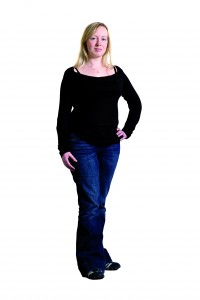MONDAY, 3 MAY 2010
 As we approach the end of another academic year, older and (maybe) wiser, our thoughts are divided between reflecting on all that has gone before and anticipating what new and exciting experiences the future might hold. This idea is echoed throughout this issue of BlueSci. In FOCUS, we look back on how during the last fifty years lasers have become the tool of choice in so many areas and forward to how they might provide answers to future challenges. Technology describes the growing use of detectable biomarkers for monitoring disease, and we also consider the technological advances that might make genome sequencing cheap enough for personalised medicine to become a reality. Finally, Perspectives turns a critical eye on the potential impact of the economic downturn on scientific research funding in the UK.
As we approach the end of another academic year, older and (maybe) wiser, our thoughts are divided between reflecting on all that has gone before and anticipating what new and exciting experiences the future might hold. This idea is echoed throughout this issue of BlueSci. In FOCUS, we look back on how during the last fifty years lasers have become the tool of choice in so many areas and forward to how they might provide answers to future challenges. Technology describes the growing use of detectable biomarkers for monitoring disease, and we also consider the technological advances that might make genome sequencing cheap enough for personalised medicine to become a reality. Finally, Perspectives turns a critical eye on the potential impact of the economic downturn on scientific research funding in the UK.Whether you are interested in the causes of high death tolls during earthquakes and the best strategies to reduce them, understanding the genetics behind hunger and feeling full, or how science might help us to finally understand the relationship between thought and consciousness, all is explored within BlueSci. So find yourself a nice sunny spot, relax and enjoy. Gemma Thornton
Cat Davies, Managing Editor
 This month, I inadvertently kicked off a heated debate on student science media. Opinions fell into two broad camps: a smaller but louder student contingent decrying the lack of interest in the student science community by working journalists, and the opposition – those professional science writers who had ‘made it’ through expertise, tenacity and a bit of luck. The basic issue was whether the science media as an industry supports those trying to break in.
This month, I inadvertently kicked off a heated debate on student science media. Opinions fell into two broad camps: a smaller but louder student contingent decrying the lack of interest in the student science community by working journalists, and the opposition – those professional science writers who had ‘made it’ through expertise, tenacity and a bit of luck. The basic issue was whether the science media as an industry supports those trying to break in.There are many networks which we as aspiring science writers can get involved with to get ahead – Nature Network Cambridge hub, The Association of British Science Writers and its student group, the Psci-Com forum and Stempra are all good places to start (after BlueSci, obviously). Joining up is the easy part; after that it’s up to us, our contacts and our ability to work for free. Perhaps it’s this cut-throat process which fuels the opinion that as students, our path to a paid post in science communications is riskier and more onerous than a nice comfortable graduate training scheme. Hey, big risks, big rewards. Not everyone will be nice as we carve out our names as freelancers, but in my experience, most will be helpful. Good luck and come and see us at BlueSci soon for an insight into the whole exciting process. Cat Davies
Issue 18: Easter 2010
Editor: Gemma Thornton
Managing Editor: Cat Davies
Business Manager: Michael Derringer
Sub-Editors: Chris Adriaanse, Taylor Burns, Wing Ying Chow, Ian Fyfe, Philip Haycock, Alex Jenkin, Lindsey Nield, Imogen Ogilvie, Helen Parker, Jessica Robinson, Djuke Veldhuis
Second Editors: Antje Beyer, Wing Ying Chow, Jesse Dunietz, Ian Fyfe, Philip Haycock, Heather Hillenbrand, Warren Hochfeld, Alex Hyatt, Alex Jenkin, Lindsey Nield, Imogen Ogilvie, Raliza Stoyanova, Katherine Thomas, Annabel Whibley
News Editor: Katherine Thomas
News Team: Jelena Aleksic, Nicholas Gibbons, Imogen Ogilvie
Book Reviews: Taylor Burns, Wing Ying Chow, Heather Hillenbrand
Focus Editors: Anders Aufderhorst-Roberts, Rosie Powell-Tuck
Focus Team: David Joseph, Wendy Mak
Dr Derisive: Mike Kenning
Pictures Editor: Natalie Lawrence
Production Team: Ian Fyfe, Alex Hyatt, Alex Jenkin, Wendy Mak, Lindsey Nield, Helen Parker, Jessica Robinson
Cartoonist: Alex Hahn
Cover Image: Tristan Heintz
Distribution Manager: Katherine Thomas
